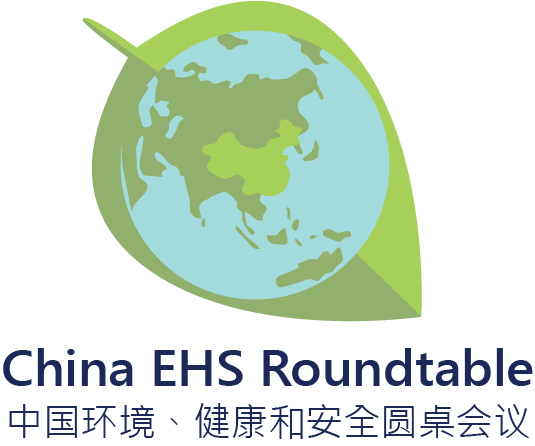What’s New with China’s Chemical Import and Export Regulatory Programs
In 2017, China updated its new chemical registration program and toxic chemical import and export control program and introduced a new chemical program – chemical substances subject to prioritized control. This alert provides an overview of China’s environmental and safety regulations on chemical products in light of these updates.
Registration and Post-registration Control of New Chemical Substances
New chemical substances in China are regulated under the Measures for the Environmental Management of New Chemical Substances (MEP Order 7), promulgated in 2010. The Ministry of Environmental Protection (MEP) administers the new chemical program. “New chemical substances” refer to chemical substances not listed under the Inventory of Existing Chemical Substances in China (commonly abbreviated as IECSC). New chemicals are classified into general new chemical substances and hazardous new chemical substances.
MEP Order 7 requires notification of new chemicals before manufacture or import. Ordinarily, companies submit standard notifications, but simplified or scientific research record notification is available in some scenarios expressly listed in the regulation. Standard notifications are further classified into class I through IV, based on the amount of manufacturing or import, which affects the required specificity of testing data submission. To submit standard notifications, companies must include the completed notification form, the required classification materials, labels, and safety data sheets, the risk assessment report, the reports, files, and certificates for physio-chemical, toxicological, and eco-toxicological testing. Companies may submit serial, joint, or repeated notifications.
MEP organizes expert reviews after receiving new chemical notifications and then decides whether to register the new chemicals. The review process can take several months. Upon the approval, the notifier will receive a registration certificate and MEP will publish the registration information online. The certificate holder has continuing obligations under the regulation and the terms on the certificate, including communicating with processers and users, implementing risk control measures, reporting and recordkeeping, and, as needed, submitting new information or notifications. Holders of certificates of hazardous new chemical substances are also subject to the management of hazardous chemicals system.
Following the publication of MEP Order 7, the Ministry released the Guidelines for New Chemical Substance Notification and Registration. Among other things, the Guidelines specify the technical requirements and process for notification submission, elaborate the notification exemption scenario, and explain the qualification requirements of an agent for a non-Chinese notifier.
In September 2017, MEP revised a number of requirements under the Guidelines, including the minimum data requirements for toxicological and eco-toxicological studies, as well as the exemption conditions for physio-chemical, toxicological, and eco-toxicological data submission. These new mandates took effect on October 15, 2017.
On December 12, 2017, MEP also promulgated new Guidelines on On-site Audit of Eco-toxicological Testing Data for New Chemical Substance Environmental Management Registration. The Guidelines took effect on the day of publication.
Regulation of Import and Export of Toxic Chemicals
The import and export of toxic chemicals are regulated by the Provisions on Environmental Management for First Import of Chemicals and Import and Export of Toxic Chemicals (Provisions), which has three components:
- First, MEP and the Ministry of Commerce (MOFCOM) publish the Inventory of Toxic Chemicals Banned or Severely Restricted in China (Import and Export Inventory). The Import and Export Inventory sets forth the toxic chemicals subject to the Provisions.
- Then, a company must apply for registration before MEP every time it intends to import or export any toxic chemical listed in the Import and Export Inventory. MEP reviews the applications and, in case of approval, issues the Certificate of Registration for Environmental Management for Import/Export of Chemicals and the Clearance Notification for Environmental Management on Import/Export of Toxic Chemicals.
- Finally, companies need to present the Clearance Notification to the customs authorities to seek clearance of the import or export of the toxic chemicals.
On December 15, 2017, MEP, MOFCOM, and the General Administration of Customs (GAC) issued a new Inventory of Toxic Chemicals Severely Restricted in China (2018) (2018 Import and Export Inventory), which took effect on January 1, 2018. The 2018 Import and Export Inventory has a significantly narrower scope of restriction than the preceding inventory. Only ten groups of chemicals are listed, all subject to the Stockholm, Minamata, or Rotterdam Conventions. The Inventory provides the CAS numbers of restricted chemicals.
Along with the new Inventory, the three authorities also released two companion explanations on processing Clearance Notifications, one for import and the other for export. These explanations elaborate on the criteria for registration and the necessary materials to be submitted, both depending on which international convention is implicated. It normally takes twenty days for the MEP to make a decision on the registration for import and export from its acceptance of the application and another twenty days to release the result after its determination. The timeframe, however, does not include the time for MEP to undertake the prior informed consent procedure in case of exports. Each Clearance Notification is valid for six months.
Chemicals Subject to Prioritized Control
On December 27, 2017, China published a new List of Chemicals Subject to Prioritized Control (first batch). The List focused on chemicals that have “relatively significant inherent hazard characteristics, and may be persistent in the environment and may cause relatively significant risks to the environment and human health.” The first batch of the List contained 22 chemicals and groups of chemicals. The government released the CAS numbers and the chemical names.
According to the Policy and Measures for Risk Management of Chemicals Subject to Prioritized Control, the listed chemicals would be subject to one or more risk management measures below:
Regulate the listed chemicals through China’s pollutant emission permitting system. Companies and entities discharging listed chemicals are required to obtain discharge permits;
Restrict the use of the listed chemicals through the compulsory national standards, and/or encourage the adoption of alternatives. The China RoHS program and the requirements for prohibited substances on automobiles are two examples of these initiatives.
Require a clean production audit and public disclosure measures under China’s Law of Promoting Cleaner Production and its implementation regulation.
Conclusion
Chemical regulation in China involves multiple governmental authorities. It takes many different forms, including regulation, guidelines, and technical standards. Unsurprisingly, it is a complex system for companies that engage in the manufacture, import, sale, storage, transport, and use of potentially regulated chemicals in China. Such companies may, therefore, want to learn about the specific requirements and obligations that may apply to their business before entering into the Chinese market.










